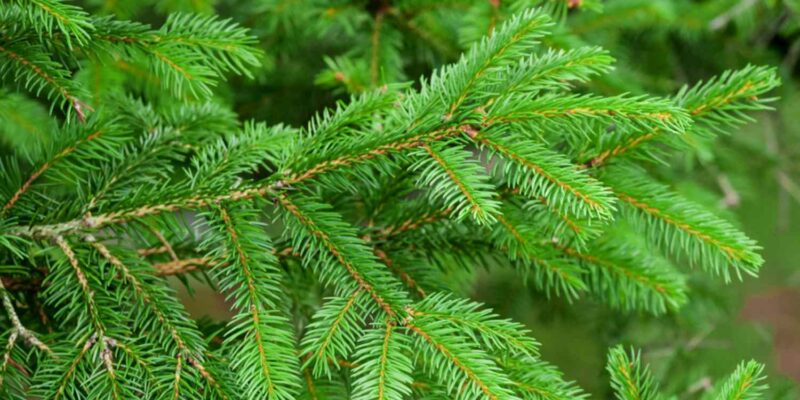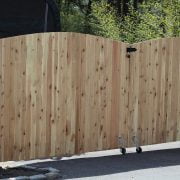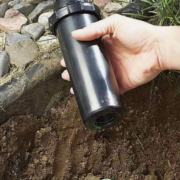If you’ve done your own landscape maintenance in Colorado, there’s a good chance that you’ll have some conifer trees located on your property. Coniferous trees are notable for their thin needles instead of leaves (compared to deciduous trees) and can be found throughout practically the entire country.
From the sandy soils of Georgia to the coldest stretches of Alaska, coniferous trees, like pines, are one of the most common and eye-catching trees around.
But, if you have coniferous trees on your property, there are some things you should know about them. Their general maintenance and care will differ in distinct ways compared to other types of trees like your common oaks or maples.
But with care and attention and a bit of research, your conifers will thrive in your outdoor space and offer a classic look to your landscape design that simply can’t be matched.
Here, we’re looking into these beautiful, distinct trees and how you can take better care of them to ensure they’ll be a part of your landscape design for many years to come.
What Makes Conifers Unique?
Conifers are truly distinctive and you’ll know them when you see them. Whether it’s a pine, fir, or spruce, conifers are distinct primarily in a visible way from how their “leaves” are different from your deciduous trees.
Instead of broad leaves, conifers have small needles or scales that can be long or short and grow in clumps or singularly. These distinctions will come down to the specific species of conifer.
Additionally, most conifers are known as “evergreens,” meaning they will stay green all winter long and never shed their needles as deciduous trees do in the autumn.
Instead, conifers gradually shed their needles throughout the year to replace them. However, some species, like the larch, actually will turn color in fall and shed all of their needles at once.
The blossoms of these trees may be male or female, but they don’t have those colorful petals you might expect. Instead, these trees blossom with small cones or inflorescences that are made up of soft scales.
The cones will have the seed located at the bottom of the overlapping scales. The wood for conifers often contains high levels of resin, which helps to fight off parasites and heal injuries. Conifers are popularly used in manufacturing wood for construction or used as pulp for paper products.
How to Care for Your Conifers
Now, if you’re choosing to include these beautiful trees on your property, how will you ensure they remain healthy and vital? Read on for some simple tips on how best to care for your conifer trees.
1. Planting: the best times to plant your conifers are spring and early fall when there’s more water available and slightly cooler temperatures (depending on your local climate, of course).
It’s also ideal for planting on an overcast day so that you can reduce water loss from direct sunlight. For their location, consider a spot in full sun as conifers thrive in full sunlight. Partially shaded regions can also work on your property.
2. Soil type: when it comes down to the soil type, most coniferous trees will prefer slightly acidic soil. The soil should be loamy and well-drained. If the soil is very compact, then it should be sufficient to retain moisture. If it isn’t, you may want to add some organic matter to the base of your tree.
3. Watering: especially in the early stages as new roots are beginning to develop, careful watering is essential for the growth of your tree. Check on your conifer every three days or so (during the first few weeks) to check for signs of stress. If the soil feels dry, feel free to continue watering.
After three to six months (when the new roots generally have developed by now), you can reduce the number of times you check in for watering. Once your tree is established, it should only need supplemental watering during a drought or unusually hot periods.
The amount of water will depend on the species and the soil. For most conifers, however, water thoroughly if the first two to three inches of topsoil feel dry. It’s also key to know that, compared to other trees, these pines do not show as many signs of stress. They won’t really wilt during stress, but they may lose color and some needles may turn brown.
4. Fertilizing: luckily, conifers don’t require too much extra fertilizer. Generally, an annual application of a complete garden fertilizer (consider 10-10-10 or 16-8-8) will suffice. You can also use manure as a top base. Try to fertilize in the early spring before dormancy breaks or in late fall before a freeze.
5. Maintenance: most of your pruning and maintenance should be tackled in the winter months when the tree is dormant. However, any noticeable dead or broken limbs should be removed immediately as these can serve as an entry point or pests.
Don’t prune too drastically, however, as conifers can’t re-sprout from older wood like a deciduous tree or shrub may be able to. If you prune too much, your conifer may never fully recover.
Conclusion – How to Care for Your Conifers
Coniferous trees are a classic inclusion for any Colorado or Denver landscape design.
While these trees can be found plentifully across the country, pines, spruces, and firs have a particular Colorado feel about them as they’re the most common tree type and can be found thriving at high elevations in the mountains.
In the winter months, they’ll also help you retain some color and dimension in your landscape design.
But there are certainly some things you need to know to ensure your conifers trees will be stunning and thriving throughout the entire year. Hopefully, this article helped with reviewing tips from planting to fertilizer and regular maintenance.
But this is just a starting point. Consult your local nursery for more information on planting and caring for your conifers for a uniquely Colorado landscape.













Comments